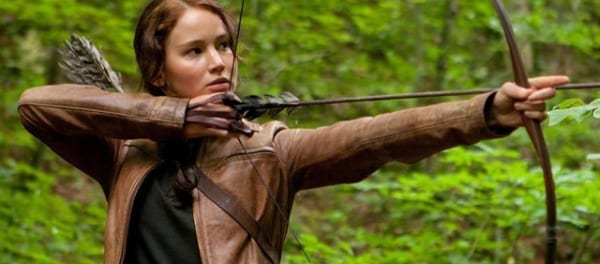When the trailer first appeared for the popular young adult film The Hunger Games, there was unsurprisingly an outcry among parents and the public in general: how can you aim a film based on a book about children being forced to kill each other at children themselves? The very premise of the series – teenagers are placed into an arena and forced to fight to the death until there is only one survivor – is so disturbing that it’s no wonder there was significant controversy for its 12A certificate. Originally the film was set to have a 15-rating, so in order to lower the certificate and therefore increase the film’s profits, Lionsgate removed several seconds from the movie that contained the sight of blood and weapons…because that’s the most disturbing aspect of a film based around the murder of children?
This was by no means the first time a controversy like this has appeared, nor was it the last. The Motion Picture Association of America (MPAA) came under fire, and rightly so, in 2011 when the indie drama Blue Valentine was initially given a rating of NC-17 due to a scene where a female character is shown receiving cunnilingus and having an orgasm. The film’s star Ryan Gosling accused the MPAA of sexism, saying, “There’s plenty of oral sex scenes in a lot of movies, where it’s a man receiving it from a woman – and they’re R-rated. Ours is reversed and somehow it’s perceived as pornographic.” The film was later brought down to an R-rating. Blue is the Warmest Colour, a film depicting a graphic lesbian sex scene, was also given a rating of NC-17, although this was not brought down despite backlash from film-goers accusing the MPAA of homophobia – had the film been about a heterosexual couple, it would have no doubt been rated R despite the explicitness and length of the sex scene in question.
So why are scenes of violence considered more suitable for teenagers to watch than sexual scenes? More specifically, why are scenes of violence towards women and children considered more suitable for teenagers to watch than a woman receiving sexual pleasure? Films like Black Swan and Stoker feature a scene where a female character pleasures herself and are rated 15 and 18 respectively; the 2013 remake of The Woman in Black features horrifying scenes where a woman hangs herself and young children not only die, but do so through suicide – it was rated a 12A.
Films are also frequently given a higher certificate rating if there is a high amount of profanity used, something many people find ridiculous, as if teenagers aren’t already highly exposed to swearing. Film critic Roger Ebert argued that the American rating system places more emphasis on trivial aspects of a film, such as the number of times a profane word is used, than the overall theme of the film, like whether it realistically and respectfully depicts the consequences of the sex and violence it details. The 2010 superhero film Kick-Ass attracted a significant amount of controversy due to a scene in which a then 11-year-old Chloe Grace Moretz uses the word “cunt”. Her co-star Christopher Mintz-Plasse responded to this by expressing his surprise that more people were offended by the language than the fact her character kills people.
There is no doubt that the recent surge in popularity of the superhero genre and adaptations of young adult books has forced organisations like the BBFC (British Board of Film Classification) and MPAA to be more lenient in what they deem acceptable for younger audience to watch. When Sam Raimi’s first Spider-Man film arrived in 2002, it was originally classified as a 12, meaning its target audience (pre-teen comic fans) were unable to see the film. After a surge of angry letters and complaints, the new 12A certificate was brought forward – anyone under 12 was permitted so long as they were accompanied by an adult. Virtually every superhero movie since has been given a 12A rating.
12A soon became the go-to rating for blockbusters – film-makers were allowed to include a reasonable amount of sex and violence, while studios could count on the money coming in as virtually anyone of any age could go and see it. Many experimented with just what they could get away with, the most notable of which being the 2008 Batman sequel The Dark Knight; a grand total of 364 complaints were made due to the film’s bleak tone, the frequent use of knives, and a particularly stomach-turning scene in which a man’s head is violently pushed into the lead end of a pencil. Understandably, parents weren’t happy. Given that the film earned over $1bn, however, it’s doubtful any number of complaints would change the studio’s minds.
With the third film in the Hunger Games franchise set to be released next month, it’s a safe bet on which rating it will receive. Commercial pressure from studios along with the abundance of younger fans is ultimately too much for the BBFC to ignore, no matter how many more violent deaths we’ll have to sit through. Perhaps our generation is simply far more desensitized to violence than our parents’ generation, though. After all, we’re used to seeing people getting assaulted or killed every day on a different TV show; it’s virtually unavoidable. What we’re not used to however is seeing people, particularly females, expressing themselves sexually in a way that has nothing to do with violence or torture; for some reason the classification boards don’t seem to think we’re ready for that, or comfortable enough with it. But kids murdering each other? Of course! Everyone should be able to enjoy that!
Words by Samantha King
